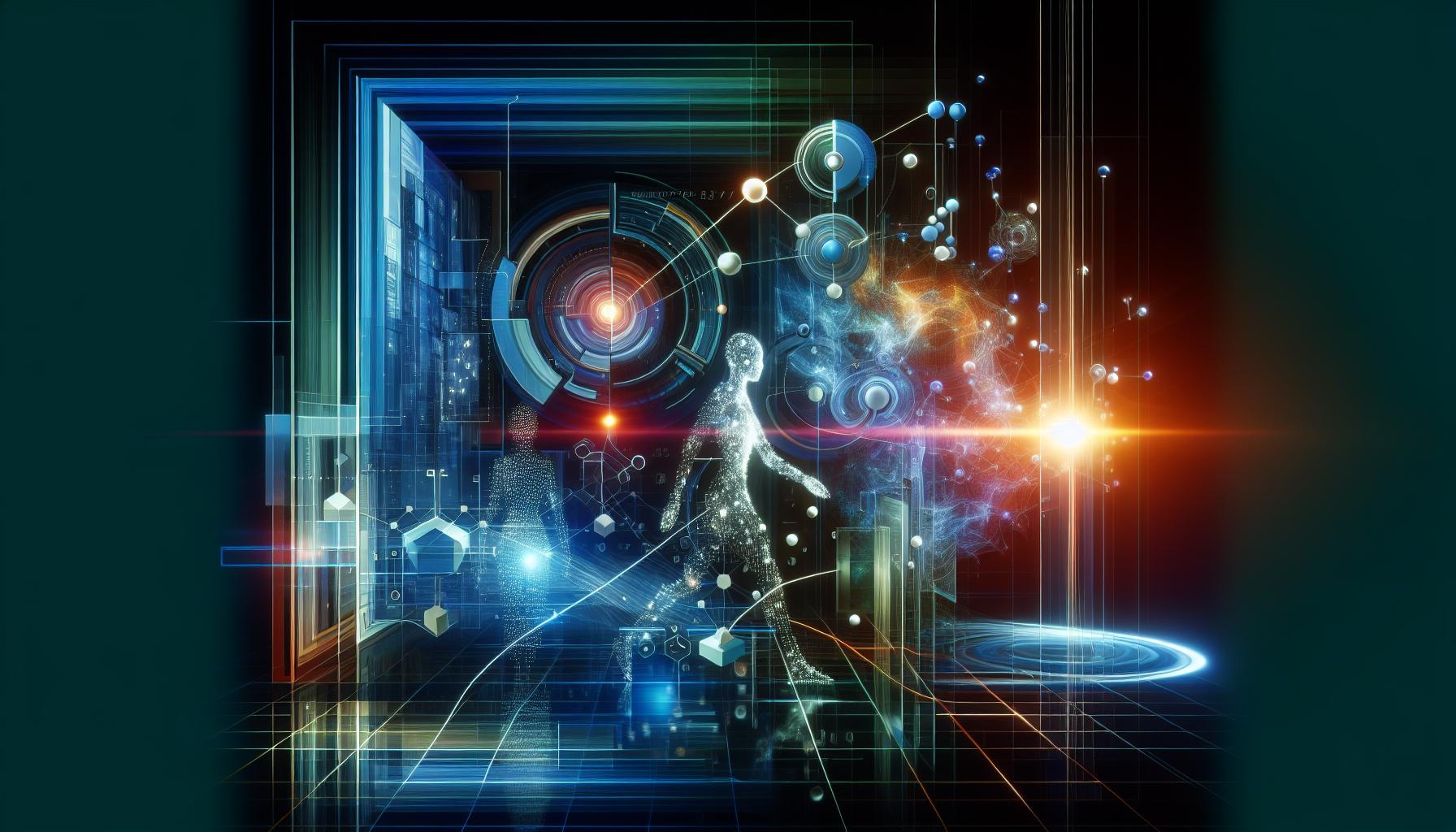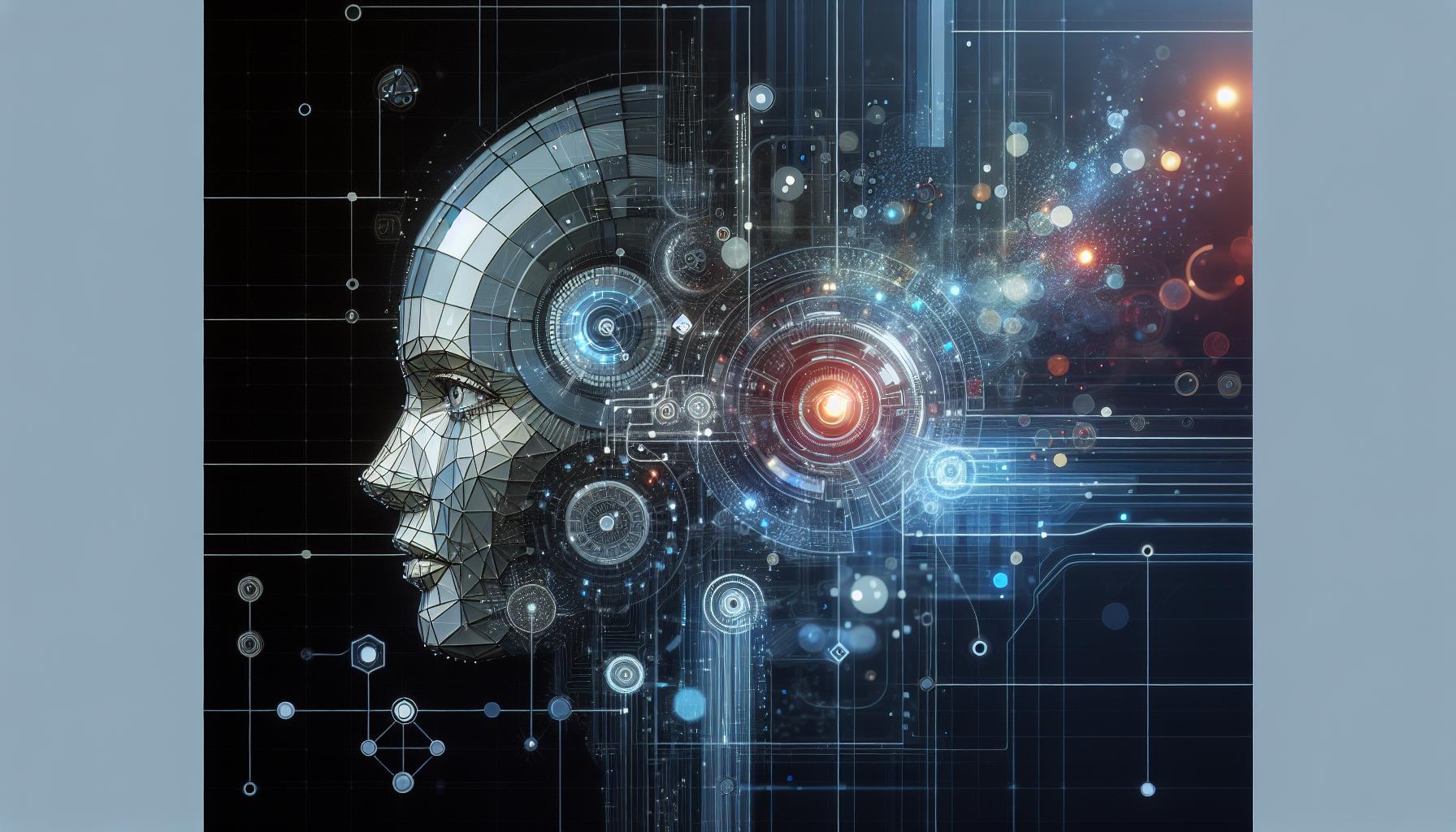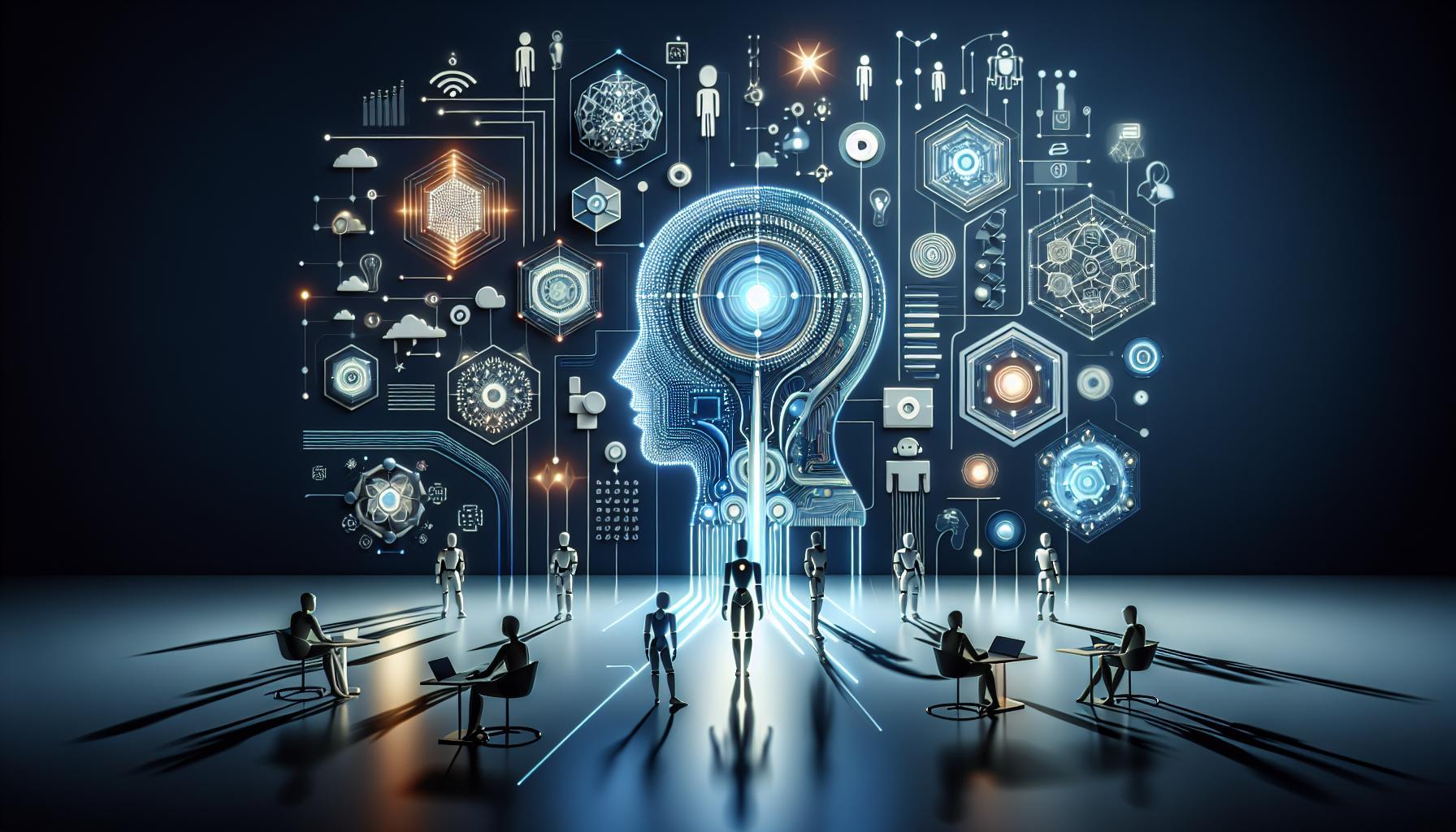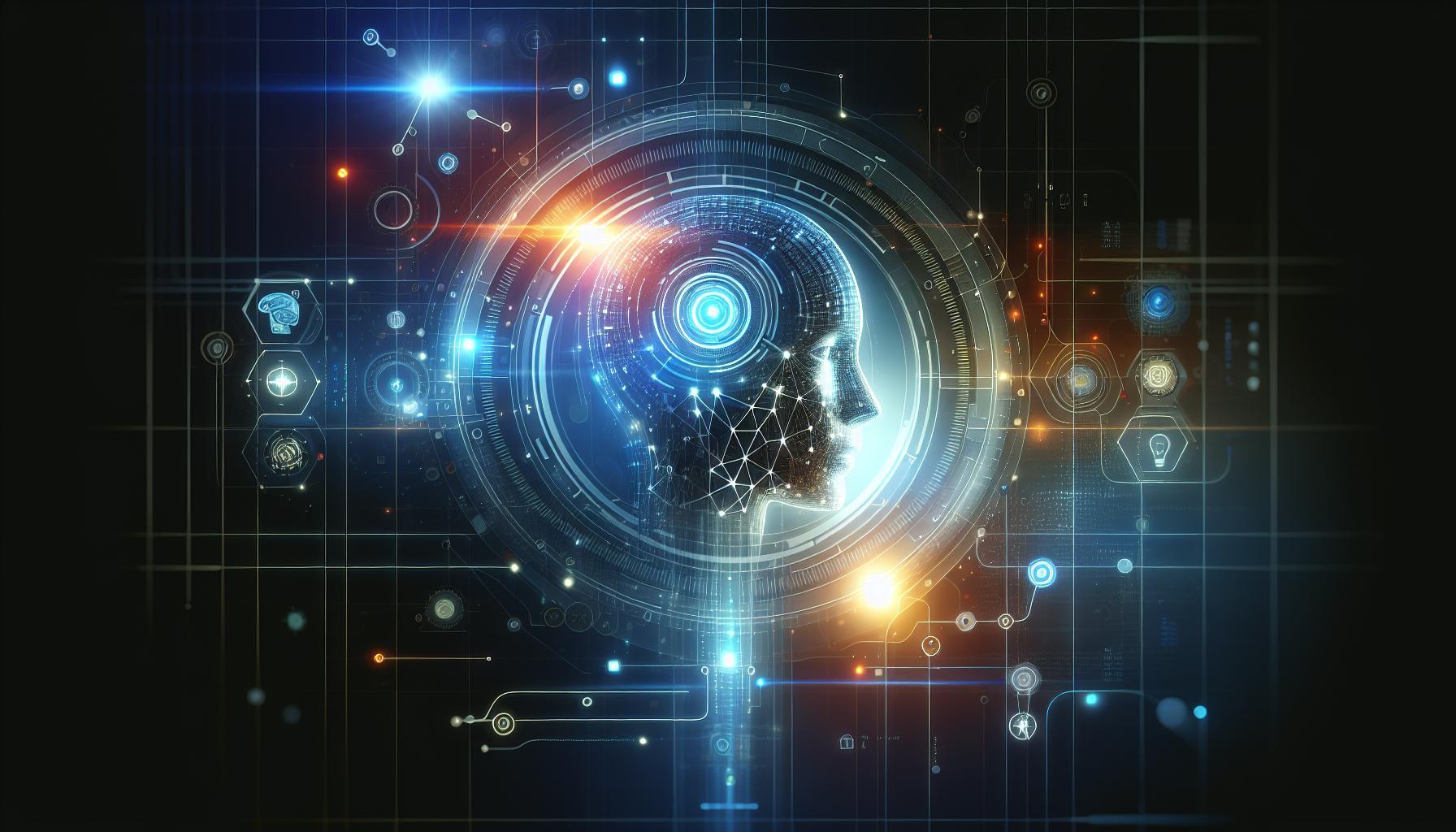Crafting the perfect AI prompt can be challenging, often leading to unexpected results. This guide will empower you with essential techniques to refine your prompts in Midjourney, enhancing your creative outcomes. Mastering the art of prompt editing is crucial for anyone looking to unleash the full potential of AI-generated art.
Understanding the Basics of Midjourney Prompts
Understanding how to craft and edit prompts in Midjourney is crucial for generating compelling AI artwork. The ability to refine your textual input can significantly impact the quality and relevance of the images produced. As you delve into the art of prompt creation, remember that a well-structured prompt not only conveys your vision but also guides the AI in interpreting it accurately. Enhancing your prompts through a systematic approach will enable you to leverage the full potential of Midjourney’s capabilities.
To effectively edit a prompt in Midjourney, consider these fundamental strategies:
- Clarity is Key: Be as clear and descriptive as possible. Use specific language that reflects your vision to minimize ambiguity in the generated outputs.
- Utilize Modifiers: Incorporate adjectives and visual descriptors to influence the artistic style, color palette, and mood of the images. For example, specifying “vibrant colors” or “moody atmosphere” can yield vastly different results.
- Include References: Whenever pertinent, provide references to existing artworks or styles. This aids the AI in understanding the context and direction of your prompt, leading to more aligned results.
- Iterative Refinement: Experiment with the prompt by making incremental changes. After generating an image, analyze the results and adjust your input accordingly to enhance clarity or detail.
For those new to Midjourney, understanding the prompt structure can significantly enhance the creative process. Start by identifying the core elements you want to emphasize in your image. For instance, if your goal is to create an ethereal landscape, your prompt could begin with “a serene lake surrounded by misty mountains at dawn.”
Consider using the following framework:
| Prompt Component | Description |
|---|---|
| Subject | The main focus of your image (e.g., “a dragon”). |
| Environment | Where the subject is situated (e.g., “in a mystical forest”). |
| Style | The artistic approach (e.g., “in the style of Van Gogh”). |
| Mood | The emotional tone you want to convey (e.g., “with a sense of wonder”). |
By combining these elements, the edited prompt will become a powerful tool to harness Midjourney’s artistry. Remember, the journey of crafting a perfect prompt is iterative—don’t hesitate to revisit and revise your inputs as you experiment with different styles and themes to find what resonates best with your artistic vision.
The Importance of Prompt Editing in AI Art Generation
Creating stunning AI-generated art is an intricate dance between imaginative vision and precise instruction. In platforms like Midjourney, where creativity meets technology, the art of crafting and editing prompts can dramatically influence the final output. A well-structured prompt can serve as a roadmap, leading the AI to understand and manifest your artistic intentions. On the other hand, neglecting this aspect may result in outputs that are far from your vision, highlighting why the skill of prompt editing is paramount for achieving desired outcomes.
Editing prompts not only enhances the quality of AI-generated images but also enriches the creative process. By carefully refining your prompts, you can bring out specific styles, emotions, and details that resonate with your artistic goals. For example, if you initially input a prompt for a “landscape,” you might not get the desired result; however, by refining it to “a serene sunrise over a misty mountain landscape with vibrant colors,” you provide the AI with precise direction. This shift allows for a more tailored and fulfilling output. Here are several key considerations when you embark on editing your prompts:
- Clarity and Specificity: Always aim for clear and specific language. Vague prompts lead to vague results.
- Use of Descriptive Adjectives: Enhance your prompts by incorporating descriptive words to evoke stronger imagery.
- Style and Mood Directions: Including details about the art style (e.g., “impressionist,” “cyberpunk”) can significantly impact the visual outcome.
- Iterative Refinement: Don’t hesitate to generate multiple images based on varied prompts and refine them based on what you learn from each iteration.
In the realm of AI art generation, the interaction between the artist’s vision and the AI’s processing capabilities forms a foundational aspect of the creative process. Midjourney’s functionality allows users to refine their prompts dynamically, further enhancing this relationship. Furthermore, understanding how to edit a prompt effectively can lead to unexpected creativity, allowing users to experiment with different styles and themes until they find the perfect representation of their ideas.
Below is a simplified table highlighting common prompt elements and the potential impact of their refinement:
| Prompt Element | Impact of Refinement |
|---|---|
| Subject | Drastically affects the main focus; detailed subjects yield clearer images. |
| Context | Sets the scene; adding context like time of day influences lighting and mood. |
| Art Style | Affects overall aesthetics; specific styles direct the AI’s rendering techniques. |
| Emotional Tone | Conveys feelings; careful word choice can evoke desired emotional reactions. |
Mastering how to edit a prompt in Midjourney is not just about generating aesthetically pleasing images; it’s about harnessing the full potential of AI to bring your ideas to life as accurately and creatively as possible. This understanding allows artists to experiment beyond conventional boundaries, turning simple inputs into breathtaking visuals crafted with intention and flair.
Step 1: Analyzing Your Initial Prompt
To create stunning visuals with Midjourney, the journey begins with crafting a compelling prompt. This initial phase is crucial, as it sets the stage for the entire creative process. By thoughtfully analyzing your prompt, you can ensure it encapsulates the elements needed to generate the desired artwork. A well-constructed prompt serves not just as a request, but as a roadmap for the AI to navigate.
Start by considering the depth of your concept. Ask yourself what you want the output to convey. Are you aiming for a serene landscape, an imaginative character, or a striking abstract piece? Formulating your thoughts into clear, precise terms is paramount. Focus on these key aspects:
- Subject Matter: Define the main elements that should be included. This could be specific objects, characters, or scenes.
- Style and Influence: Mention any artistic styles or influences that can guide the AI, such as “in the style of Van Gogh” or “cyberpunk aesthetic.”
- Emotional Tone: Convey the mood you want to evoke. Terms like “tranquil,” “chaotic,” or “mystical” can greatly impact the result.
- Detailed Attributes: Incorporate details about colors, textures, or specific features to enrich the prompt.
Taking the time to dissect your initial prompt will help identify what elements might be vague or lacking. For example, instead of saying “a forest,” you could specify “a dense, misty forest at dawn, with ethereal light filtering through the tall trees.” This not only paints a clearer picture for the AI but also enhances the potential for a captivating image.
The next step is to review your prompt for clarity and detail. Use tools or frameworks that guide you in refining your instructions to the Midjourney AI model. Each refinement brings you closer to achieving a powerful visual output that aligns with your creative vision. As you proceed through this guide on editing prompts in Midjourney, remember that the success of your results often hinges on this foundational stage.
Step 2: Identifying Areas for Improvement
Identifying areas where your prompts can be improved is a critical step in mastering the art of crafting effective AI requests. A well-edited prompt can not only enhance the quality of the outputs from AI models like Midjourney but can also save you time and effort in the long run. Before diving into refinements, it’s essential to analyze your existing prompts to uncover potential shortcomings and areas that could benefit from enhancement.
Start by reviewing the outputs you received from your initial prompts. Were they aligned with your expectations? Did they capture the essence of what you were trying to convey? Here are some key aspects to consider while assessing your prompts:
- Clarity and Specificity: Are your prompts clear and specific? Vague instructions often lead to generic responses.
- Contextual Information: Have you provided enough context? Including background information can significantly influence the AI’s response.
- Intended Style and Tone: Have you specified the style or tone you want? Indicators like “formal” or “conversational” should be included as necessary.
- Target Audience: Is your prompt tailored to the right audience? Understanding who will benefit from your output can guide your phrasing.
Evaluating Specific Elements
When it comes to pinpointing what to improve, breaking your prompt into manageable parts can help. Assess each component individually, focusing on syntax, grammar, and the presence of any nuanced ideas. Here’s how you can do this effectively:
| Element | Evaluation Questions |
|---|---|
| Language Precision | Is the vocabulary appropriate for the topic? Are there ambiguous terms that could confuse the AI? |
| Structure | Is the prompt structured logically? Does it flow smoothly from one idea to another? |
| Completeness | Does it cover all necessary aspects? Are there any gaps that need to be addressed? |
Once you’ve identified the weak spots, think about potential modifications. For example, if a previous prompt yielded a lackluster response due to vague language, consider using more descriptive terms or specifying the desired outcome. Similarly, if contextual information was missing, revisiting that aspect can provide a richer and more accurate response in your next iteration.
By scrutinizing your prompts through these lenses, you’ll gain invaluable insights into how to refine your approach. Remember, the journey of learning how to edit a prompt in Midjourney is iterative, and with each cycle, you’ll be better equipped to harness the AI’s full potential.
Step 3: Utilizing Keywords and Phrases for Precision
In the realm of AI prompt editing, precision is paramount. Using carefully selected keywords and phrases can significantly enhance the effectiveness of your prompts in Midjourney. By strategically incorporating relevant terms, you not only clarify your intent but also guide the AI in generating outputs that closely align with your vision. Understanding the types of keywords that resonate with your audience is crucial; this involves not just using popular search terms but tailoring them to reflect specific needs and contexts.
Identifying Relevant Keywords
Begin by brainstorming keywords that describe the core aspects of your prompt. Consider phrases that highlight the features or desired outcomes of your creation. Utilize tools such as keyword generators or analytics platforms to uncover terms that are trending within your niche. This step will help you craft prompts that are not only clear but are also likely to engage users effectively.
For instance, if you aim to generate futuristic landscape images, you might explore keywords like “sci-fi scenery,” “urban dystopia,” or “neon-lit skyline.” These phrases are specific enough to give Midjourney a clear direction while also appealing to user interests.
Incorporating Long-Tail Keywords
Another effective strategy is the use of long-tail keywords—phrases that are more specific and typically longer than standard keywords. These can help refine searches and lead to more precise outcomes. For example, instead of using a broad term like “landscape,” you might use “futuristic urban landscape with neon colors.”
- Broader keyword: Landscape
- Long-tail keyword: Futuristic urban landscape with neon colors
Utilizing long-tail keywords in your prompts not only improves the quality of the output but also narrows down the AI’s focus, increasing the likelihood of generating exactly what you envision.
Testing and Adjusting Your Prompts
Once you’ve integrated targeted keywords into your prompts, testing becomes essential. Run several iterations with varied phrases to see how the outputs differ. Track which combinations yield the most satisfying results and make adjustments based on the responses. This iterative process is vital for honing in on the most effective prompts as you continue your exploration of how to edit a prompt in Midjourney.
By systematically utilizing keywords and phrases tailored to your specific aims, you empower Midjourney to create more resonant and impactful results. This precision not only enhances your workflow but can also lead to more engaging outcomes that better reflect your creative intentions.
Step 4: Experimenting with Different Styles and Formats
To truly unlock the potential of Midjourney and craft stunning AI-generated images, experimenting with various styles and formats is essential. By broadening your approach and testing different elements, you can discover remarkable outcomes that align closely with your artistic vision. Each style can evoke different emotions or create distinct atmospheres, making it crucial to understand how slight changes in your prompt can lead to significantly varied results.
Exploring Artistic Styles
Start by incorporating specific art styles in your prompts. For instance, you could specify classic styles such as Baroque, Impressionism, or Cubism, or contemporary styles like Vaporwave or Synthwave. Here’s how you can structure these styles within your prompts:
- Traditional Style: “A serene landscape in the style of Monet.”
- Modern Movement: “An abstract cityscape resembling Frank Stella’s artworks.”
- Digital Aesthetic: “A futuristic portrait inspired by Cyberpunk art.”
Integrating Formats
In addition to styles, you can experiment with different formats. Midjourney allows you to specify the medium, which can significantly influence the end result. Consider including formats like photograph, digital painting, or watercolor in your prompts. Here’s a simple table illustrating various styles and formats you might combine:
| Format | Example Prompt |
|---|---|
| Photography | “A photograph of a sunset over the city skyline, hyper-realistic.” |
| Digital Art | “A digital painting of a dragon soaring through a starry sky.” |
| Watercolor | “A watercolor illustration of a tranquil garden in spring.” |
Combining Elements
The real magic happens when you merge styles and formats within a single prompt. For example, you could create a prompt that says, “A watercolor landscape in the style of Van Gogh,” or “A digital painting depicting a Cyberpunk city with an impressionistic touch.” The varied combinations enhance creativity and encourage the AI to produce visually interesting images that might surprise you.
As you refine your prompts in Midjourney, remember that experimentation is key. Don’t hesitate to try unconventional styles or mix multiple techniques. Each iteration not only hones your skill in crafting effective prompts but also enriches your understanding of how different styles and formats can dramatically alter the narrative and visual identity of your artwork.
Best Practices for Iterating on Your Prompts
Refining prompts to achieve optimal results in Midjourney is akin to honing a craft; each iteration offers an opportunity for improvement. Understanding the nuances of your prompts can lead to creative breakthroughs and more satisfying outputs. The process of iterating on your prompts is not merely a technical adjustment but an art that combines clarity, specificity, and creativity.
Understand Your Goals
Before diving into the editing process, it’s essential to establish clear objectives. What do you hope to achieve with your prompt? Whether you’re seeking a specific style, mood, or detail, having a concrete goal will guide your adjustments. Consider creating a checklist that covers the elements you want to include in your images:
- Style: What artistic styles are you interested in (e.g., surrealism, realism)?
- Subject Matter: What are the main subjects or themes?
- Detail Level: How intricate should the details be?
These questions can help you formulate prompts that are both targeted and flexible enough for iteration.
Use Descriptive Language
When editing your prompt, focusing on the language you use can significantly enhance clarity. Descriptive adjectives and precise nouns lend themselves to better interpretations by the AI. For example, instead of saying “a dog,” consider specifying “a fluffy golden retriever playing in a sunny park.” This added specificity helps the AI understand the context and deliver results that align more closely with your expectations.
Analyze Previous Outputs
An effective way to improve your prompts is by reviewing the outputs generated from previous iterations. Identify what aspects worked well and what didn’t. Perhaps a certain phrase consistently yields great results while others result in less desirable outputs. Create a simple table to track this feedback:
| Iteration | Prompt Used | Output Quality | Notes |
|---|---|---|---|
| 1 | A serene landscape at sunset | Good | Vivid colors, but lacking detail |
| 2 | A detailed landscape with mountains during sunset | Excellent | High detail; colors were rich |
This method allows you to visualize what adjustments yield superior outcomes, thus refining your approach further.
Incorporating these best practices into your workflow can greatly enhance your ability to edit prompts effectively in Midjourney. By setting clear goals, using vibrant descriptive language, and critically analyzing outputs, you will find yourself crafting prompts that not only meet but exceed your creative expectations. This iterative process is key to mastering the art of AI-driven creativity, leading to consistently impressive results.
Common Mistakes to Avoid When Editing Prompts
Editing prompts effectively can significantly improve the performance and creativity of AI-generated content. However, many users tend to make common errors that can hinder the editing process and the quality of the results. Avoiding these pitfalls is crucial for anyone looking to master how to edit a prompt in Midjourney. Understanding these missteps can lead to more refined and effective prompts that yield superior outputs.
One frequent mistake is being overly vague or ambiguous. When prompts lack clarity, AI can produce results that are disconnected from the intended outcome. To overcome this, ensure your prompts are specific and detailed. For example, instead of saying, “Create a landscape,” refine your prompt to “Generate a vibrant sunset over a serene mountain lake with a clear sky.” This specificity helps guide the AI toward generating a more focused and engaging image.
Another common error is neglecting to edit and iterate on prompts. Many users input a prompt and expect the first result to be perfect. However, just like any creative process, prompt editing often requires multiple adjustments. Keep a document where you track different versions of your prompts and their outcomes. This not only helps identify patterns in what works best but also enables you to hone your skills in crafting effective prompts.
Furthermore, many fail to utilize examples or references to support their prompts. Including examples helps to anchor the AI’s output in a desired style or context. For instance, when editing a prompt related to fashion design, referencing well-known styles, such as “Create an outfit inspired by 90s grunge with flannel shirts and combat boots,” can yield more satisfactory results. This practice not only clarifies your vision but also enriches the AI’s generative capabilities by integrating recognized elements or themes.
Lastly, avoid neglecting the testing phase. After refining a prompt, engage with the output multiple times to assess its effectiveness across different iterations. Documenting the various outputs alongside the prompts can create a useful reference in future editing endeavors. By steering clear of these common mistakes, you can enhance your skills in editing prompts and better navigate the art of prompt refinement in Midjourney, ultimately leading to more innovative and engaging AI-generated content.
How to Test and Review Your Edited Prompts Effectively
Testing and reviewing your edited prompts in Midjourney is crucial to ensuring that you achieve the desired outputs from the AI. The process isn’t just about making changes; it’s also about observing how those changes affect the results. By implementing a systematic approach to evaluate your prompts, you can refine them further and harness the true potential of this powerful tool.
To begin with, it’s important to establish a clear baseline for your tests. This involves documenting the original prompt and the context in which it was used. This serves as a reference point, allowing you to measure the effectiveness of your edits. Use a simple format to capture your findings. Below is a sample table to organize your data efficiently:
| Original Prompt | Edited Prompt | Resulting Output | Notes |
|---|---|---|---|
| Describe a serene landscape. | Create a tranquil forest scene at sunset. | A vivid depiction of a sunlit forest with a golden hue. | Improved vividness and specificity in description. |
| Draw a futuristic city. | Illustrate a cyberpunk city skyline at night. | A bustling city with neon lights and flying cars. | Output closely matches the desired theme. |
Next, collect feedback on the outputs. Utilizing a feedback loop can greatly enhance the effectiveness of your editing process. Share the outputs with peers or within a community to gather diverse perspectives on how well the prompt performs. Consider these questions when obtaining feedback:
- Does the output align with the intended theme?
- Are there any elements that could be enhanced for clarity?
- Is the output engaging and visually striking?
Finally, incorporate the insights gained from your testing and feedback sessions to iteratively refine your prompts. Don’t hesitate to perform multiple rounds of edits, as each iteration can lead to significant improvements. Remember that the art of editing prompts in Midjourney largely hinges on being specific and imaginative. Effective prompts not only guide the AI but also inspire it to create stunning visual narratives. By following these strategies on reviewing and testing, you’ll be well-equipped to master the craft of prompt editing in Midjourney.
FAQ
How to Edit a Prompt in Midjourney: Step-by-Step Guide to Refining AI Prompts?
To edit a prompt in Midjourney, simply navigate to the prompt you want to modify, click on it, and make your adjustments. This process allows users to refine the input for better AI-generated outcomes.
Editing a prompt can significantly enhance the quality of the generated images. By changing specific words or phrases, you can guide the AI to produce visuals that better match your vision. Consider using synonyms or varying sentence structures for more diverse outcomes.
What are the benefits of editing prompts in Midjourney?
Editing prompts in Midjourney allows users to fine-tune their requests for more accurate and creative results. This customization can lead to a wider array of interpretations from the AI.
By understanding how to edit effectively, you can experiment with different styles or themes that the AI might otherwise overlook. This iterative process not only improves the final outputs but also contributes to a more personalized AI art creation experience.
Can I view prompt history in Midjourney?
Yes, Midjourney allows you to view your prompt history. This feature helps you keep track of previous prompts you’ve used and the generated results, making it easier to refine your inputs over time.
Accessing your prompt history can provide insights into what worked well and what didn’t, enabling you to iterate and enhance your future prompts. You can usually find this option in the settings or account section of the Midjourney interface.
Why does prompt refinement matter in AI art generation?
Prompt refinement is crucial as it optimizes the AI’s ability to understand and respond to your creative requests. A well-crafted prompt can lead to more relevant and unique outputs.
In AI art generation, the specificity of language plays a key role. For example, instead of a general term like “landscape,” specifying “sunset over a snowy mountain range” can result in a vastly different and more appealing image.
What types of prompts work best in Midjourney?
Prompts that are clear, descriptive, and specific tend to work best in Midjourney. Using vivid adjectives and precise nouns helps the AI to visualize your concepts.
Incorporating elements such as styles, color schemes, and even emotions can dramatically affect the outcome. For instance, a prompt like “a serene lake at dawn in an impressionist style” will yield a more tailored response than a vague request.
How can I get better results from my prompts?
To achieve better results, start by experimenting with different phrasing and structures in your prompts. Use strong adjectives and clarify your vision as much as possible.
You can also reference examples from the Midjourney community to see what types of prompts have yielded successful images. Joining forums or discussions can provide inspiration and insights into effective strategies.
Can I combine multiple prompts in Midjourney?
Yes, you can combine multiple prompts in Midjourney to create complex scenes or images. This technique allows for layering concepts to produce unique results.
For example, combining a prompt for “a bustling city” with “a mysterious forest” could lead to intriguing hybrid imagery. Experimenting with various combinations can yield innovative and creative outputs from the AI.
Wrapping Up
In conclusion, refining your prompts in Midjourney is not only a valuable skill for generating high-quality AI art but also a creative exercise that enhances your understanding of how AI interprets instructions. By following the step-by-step guide outlined in this article, you can learn to craft more precise and effective prompts that yield stunning and unique visuals. Remember, experimentation is key; don’t hesitate to tweak language, add specificity, or even explore new themes. We encourage you to continue your journey into the world of AI-generated art. Dive deeper into the various resources available, join community discussions, and practice regularly to unlock the full potential of Midjourney. Your creativity is your only limit—so get started and watch your ideas come to life!




